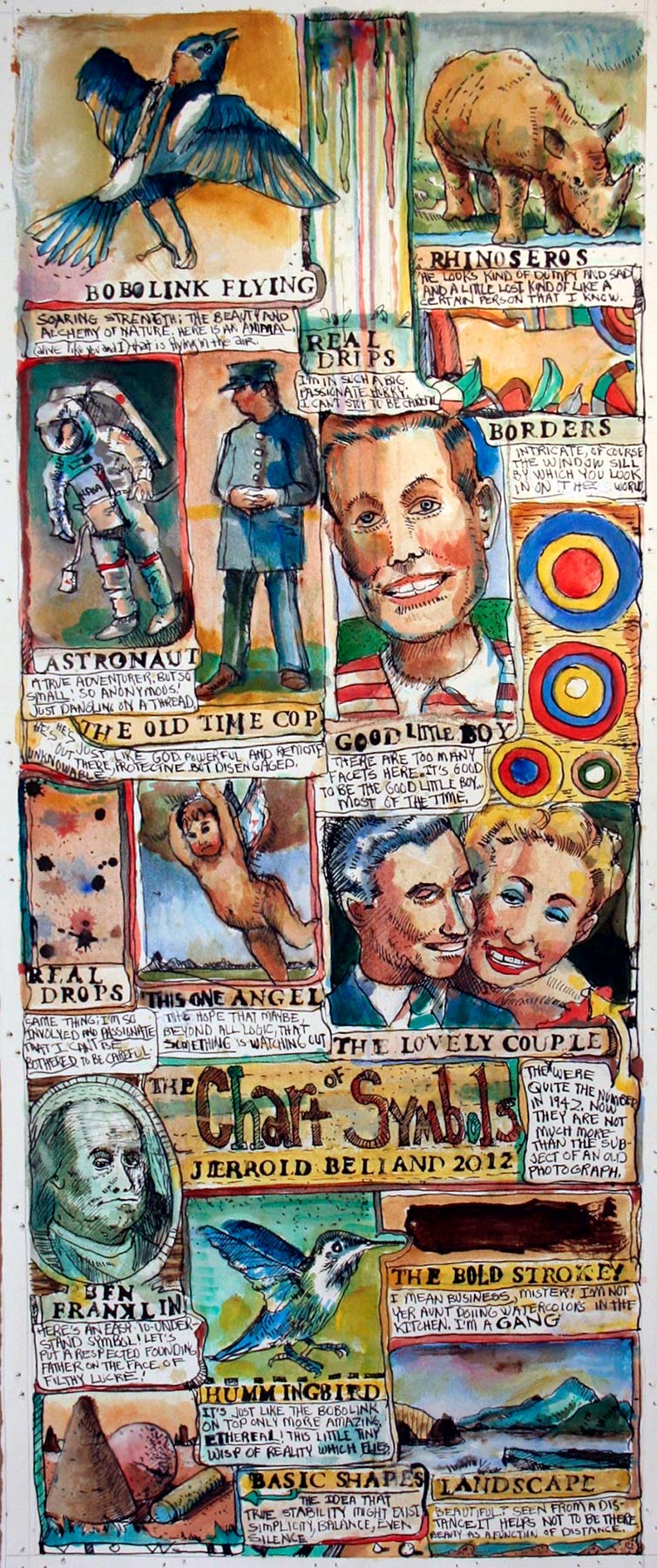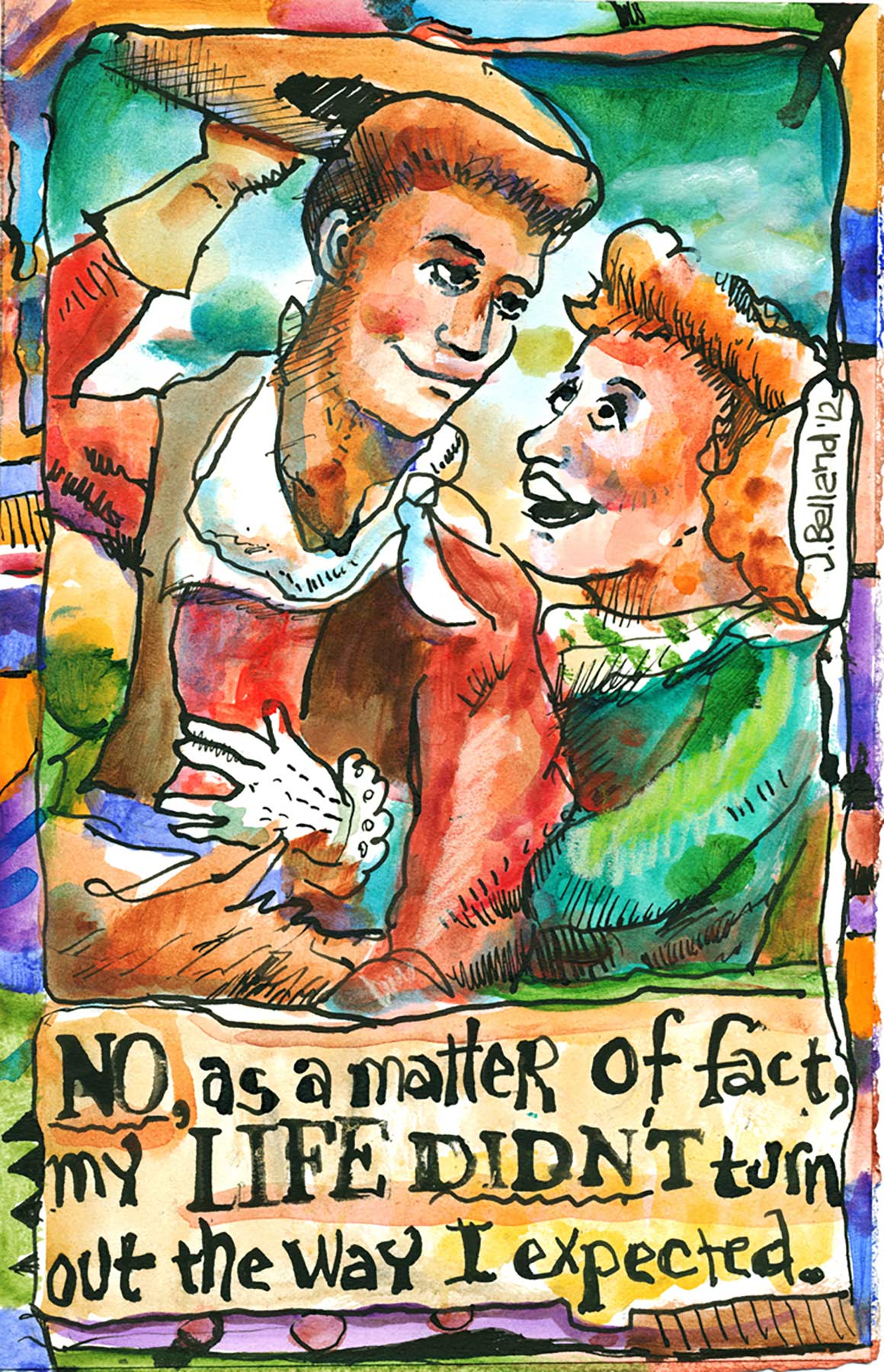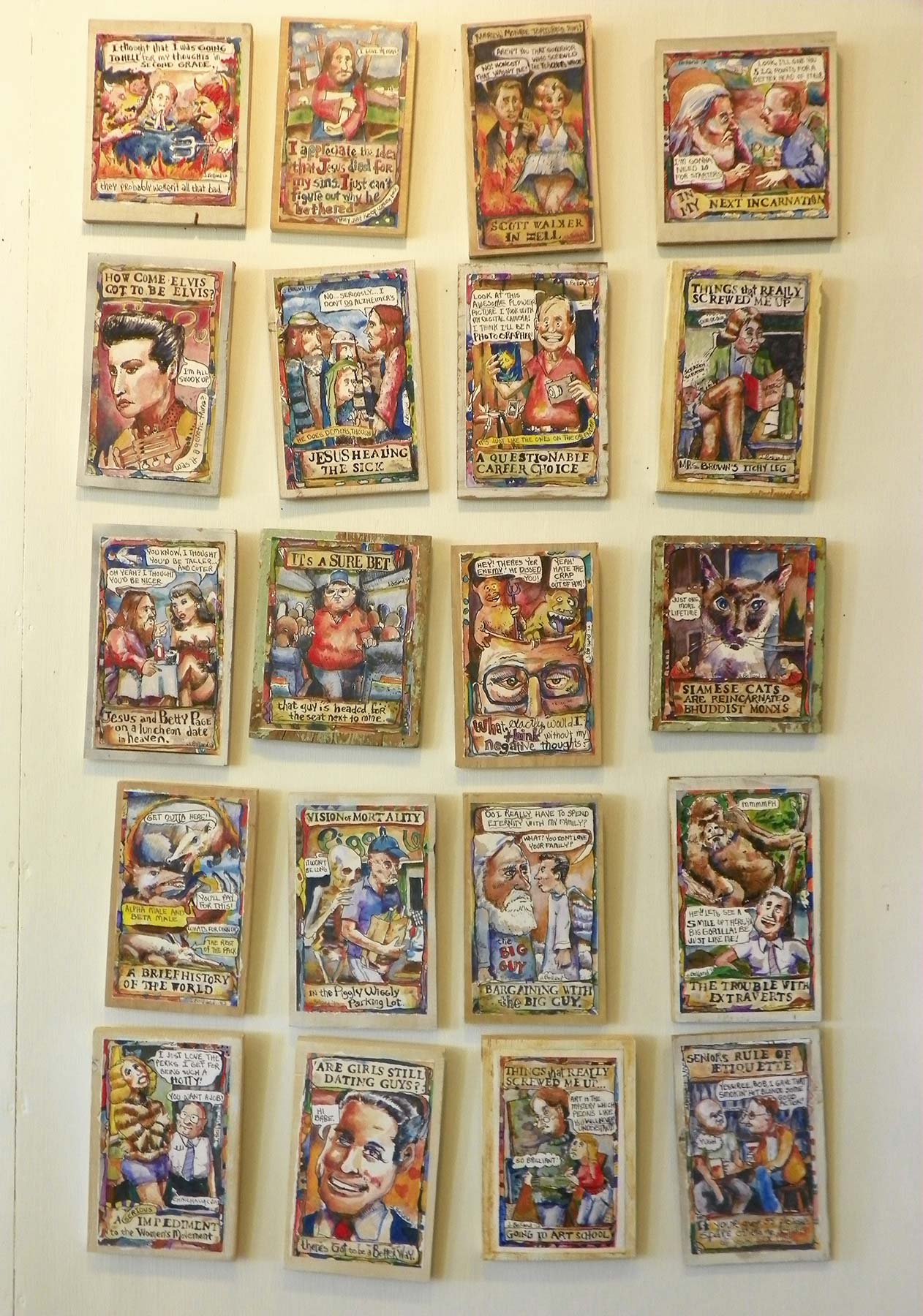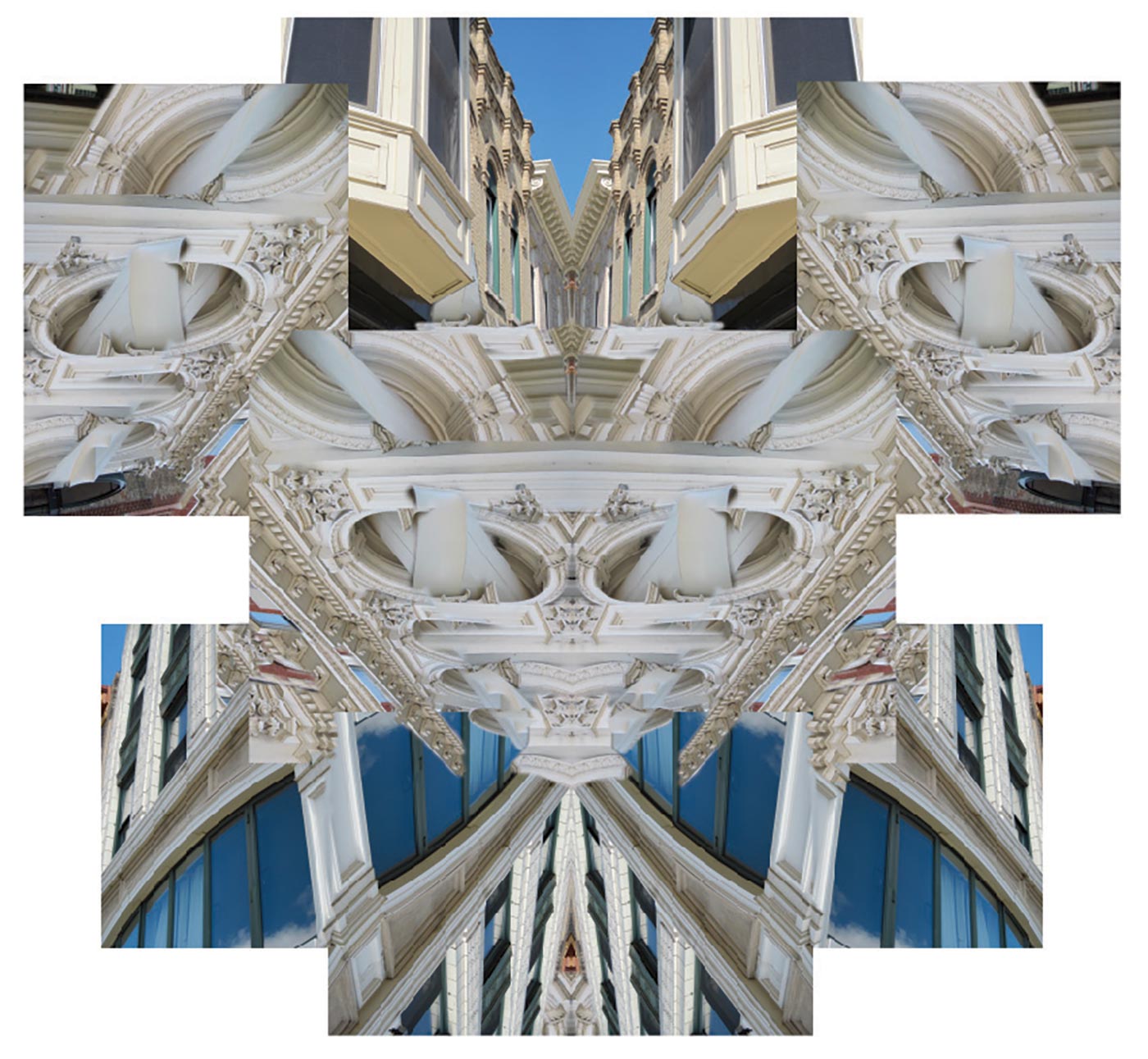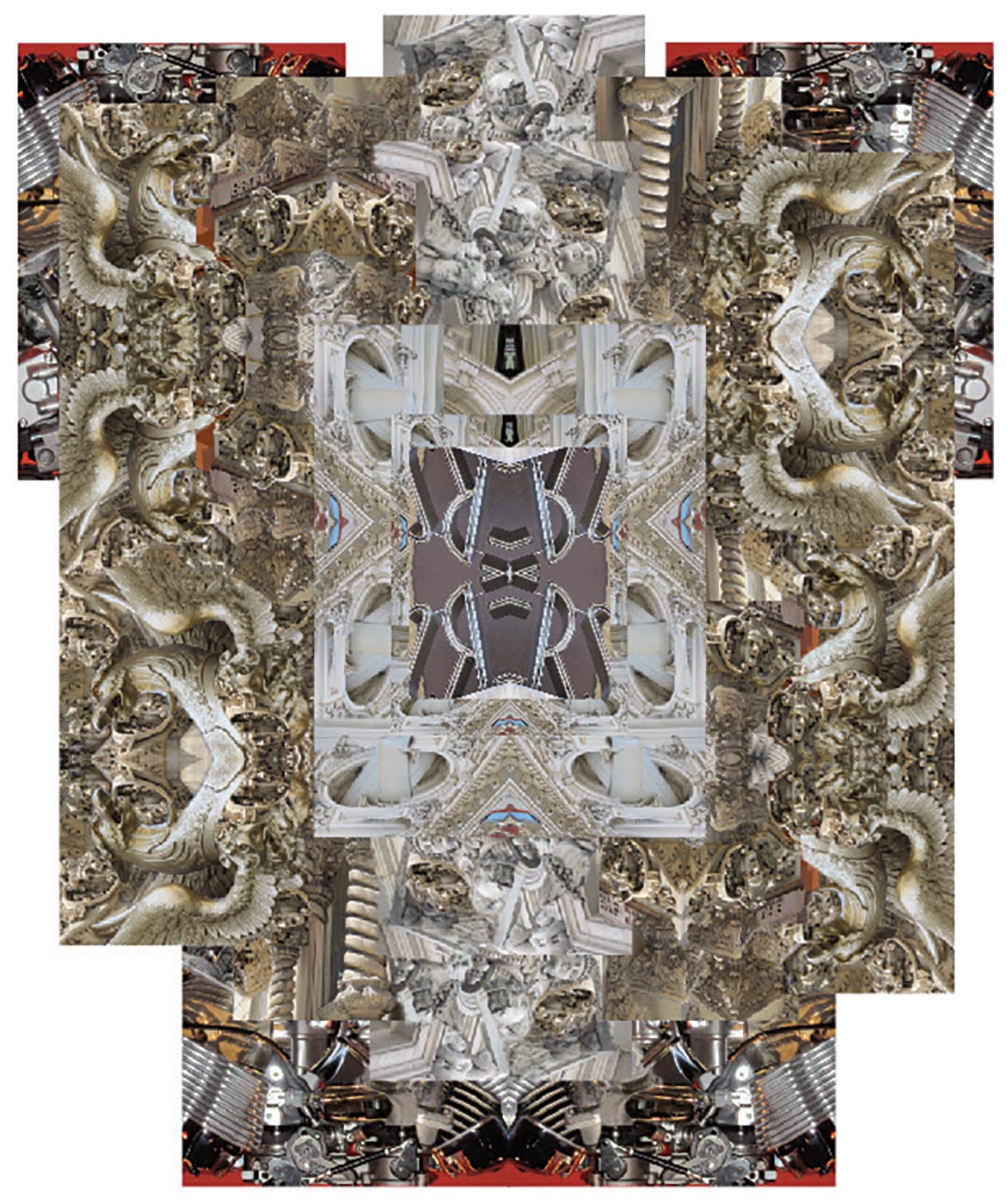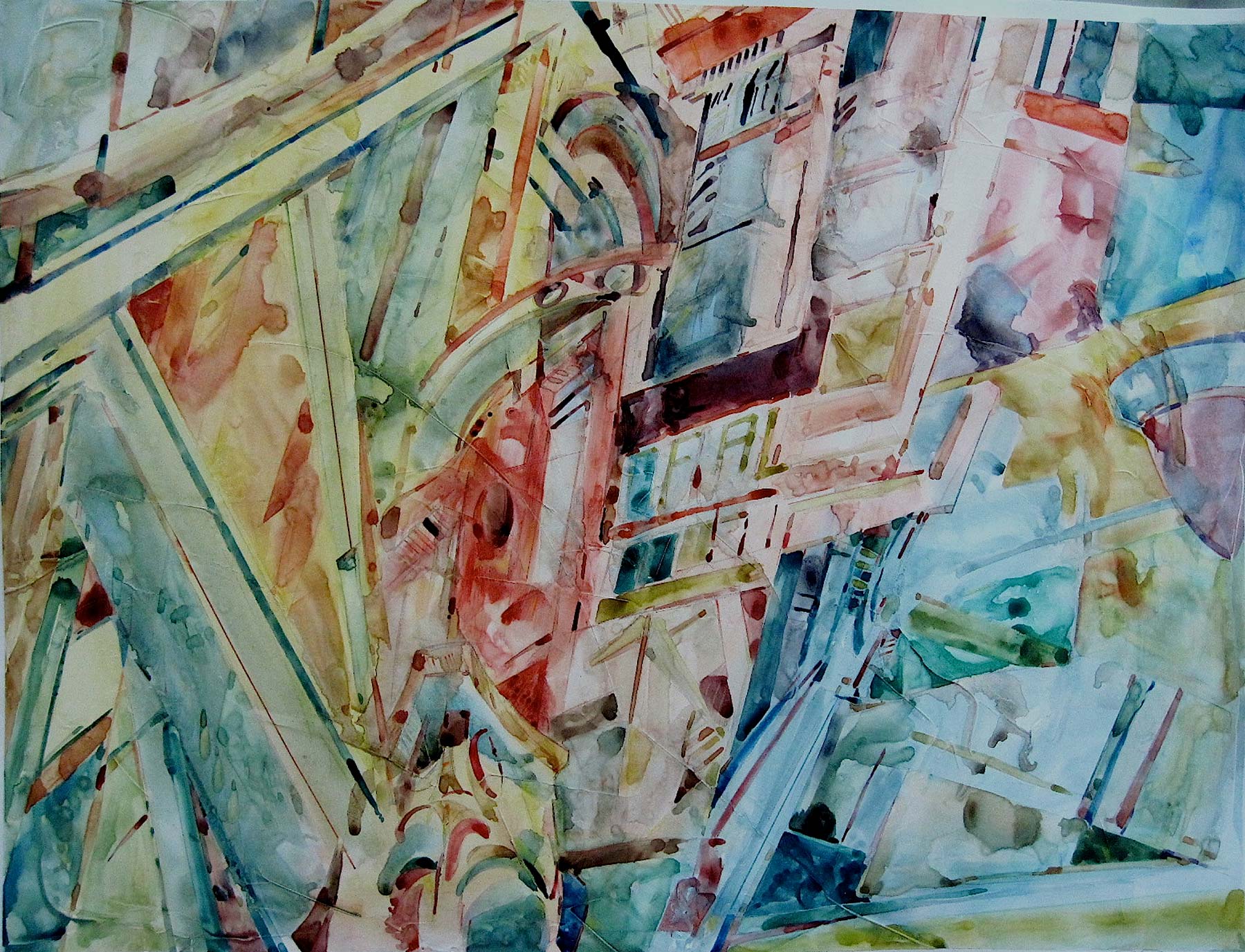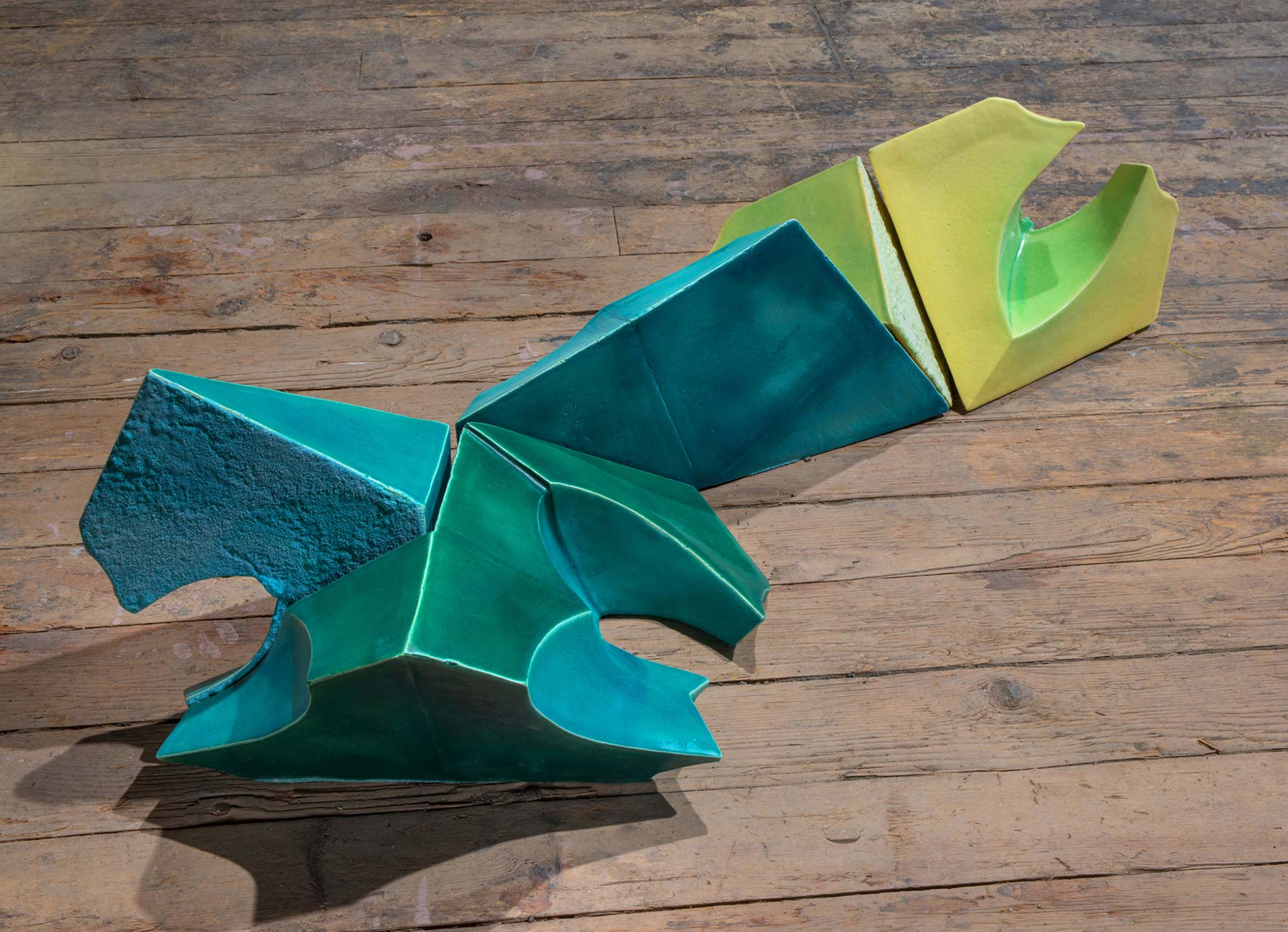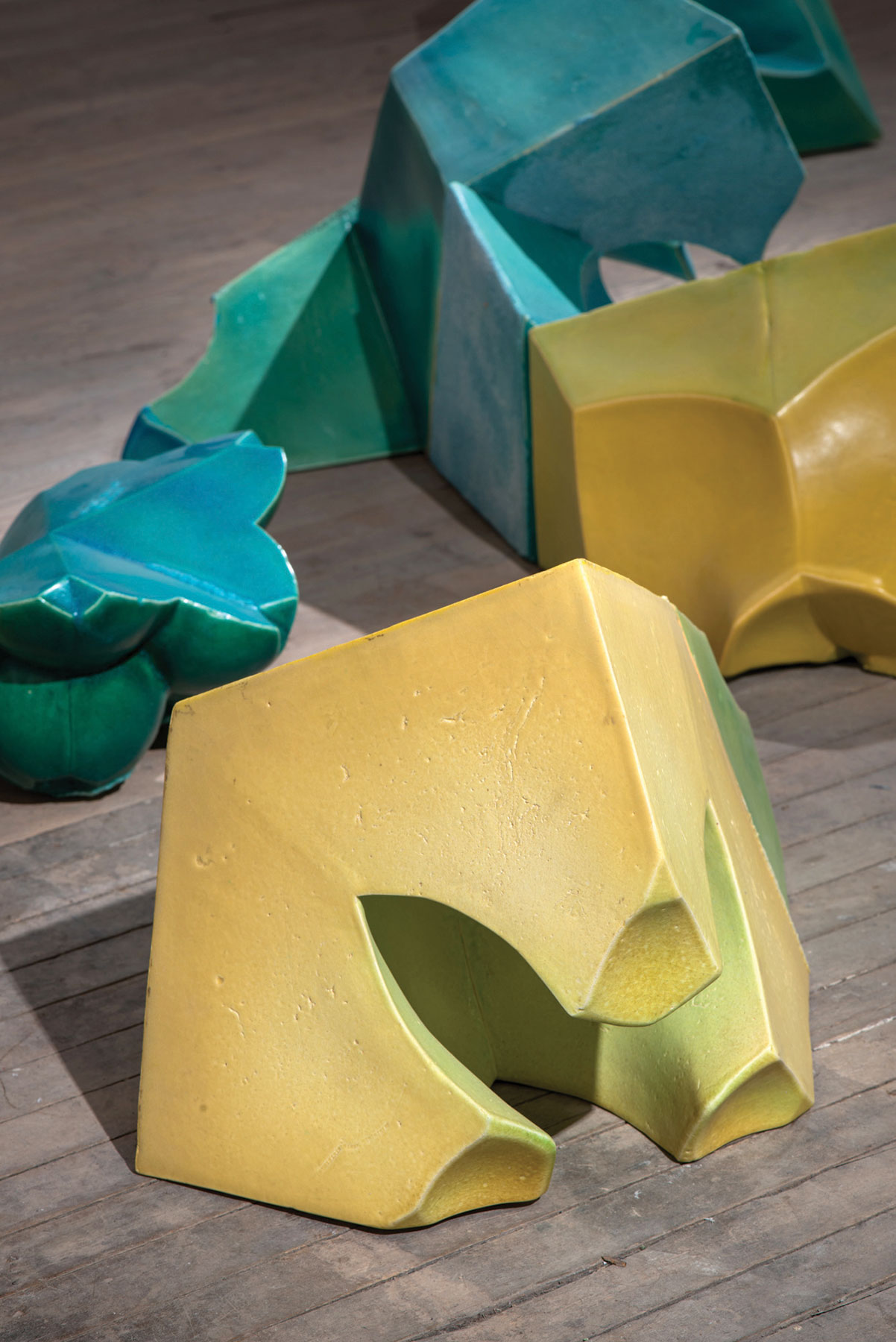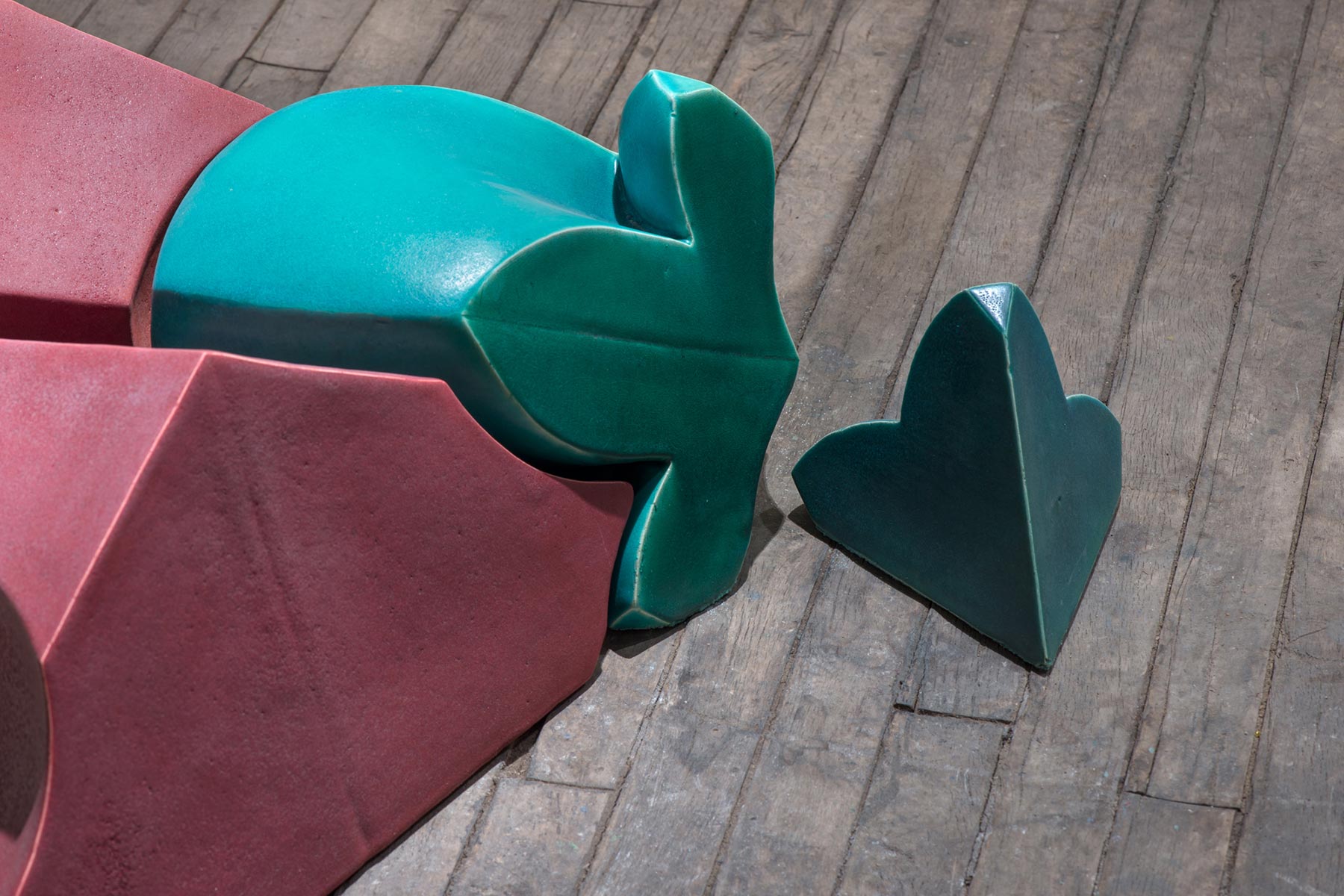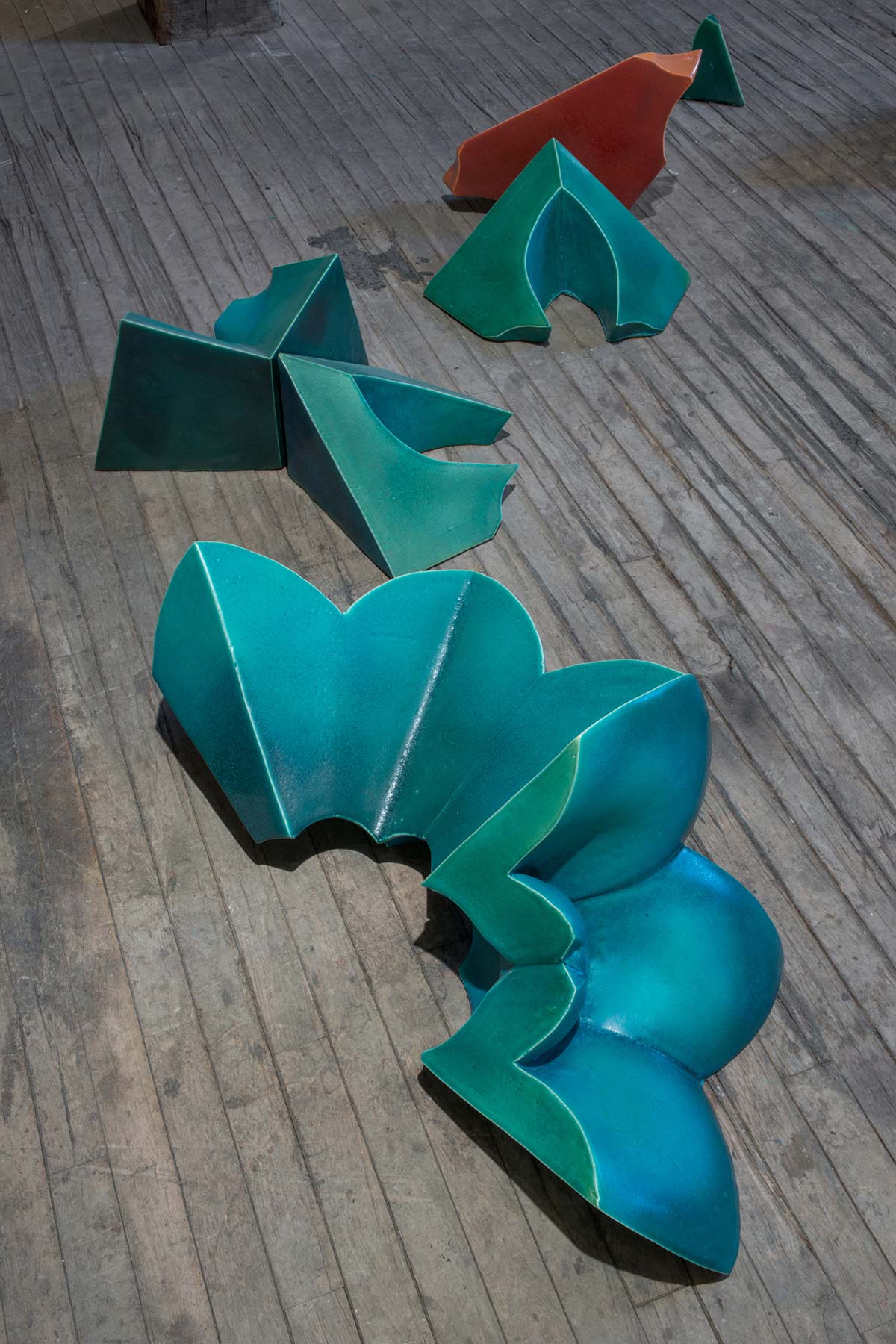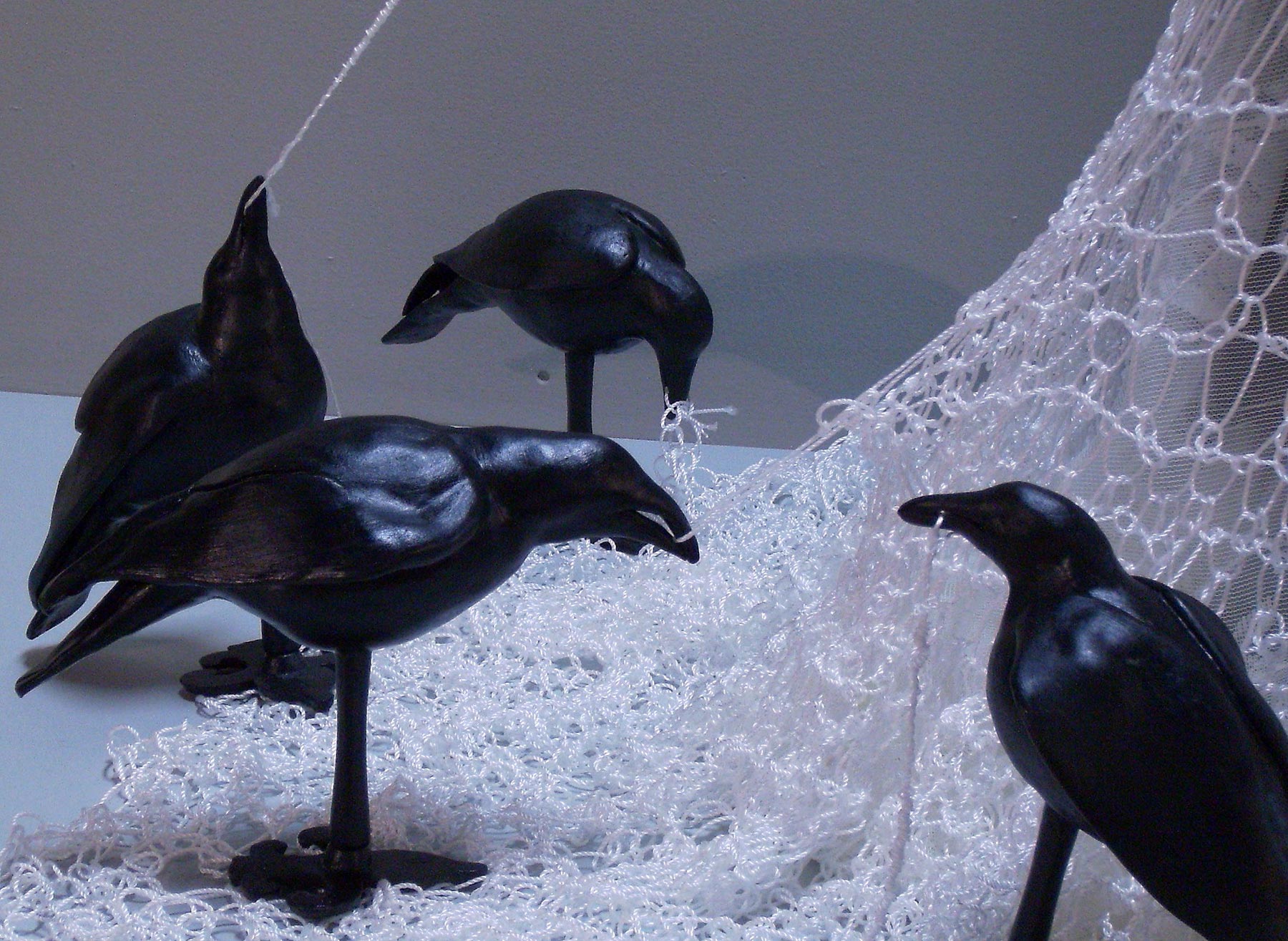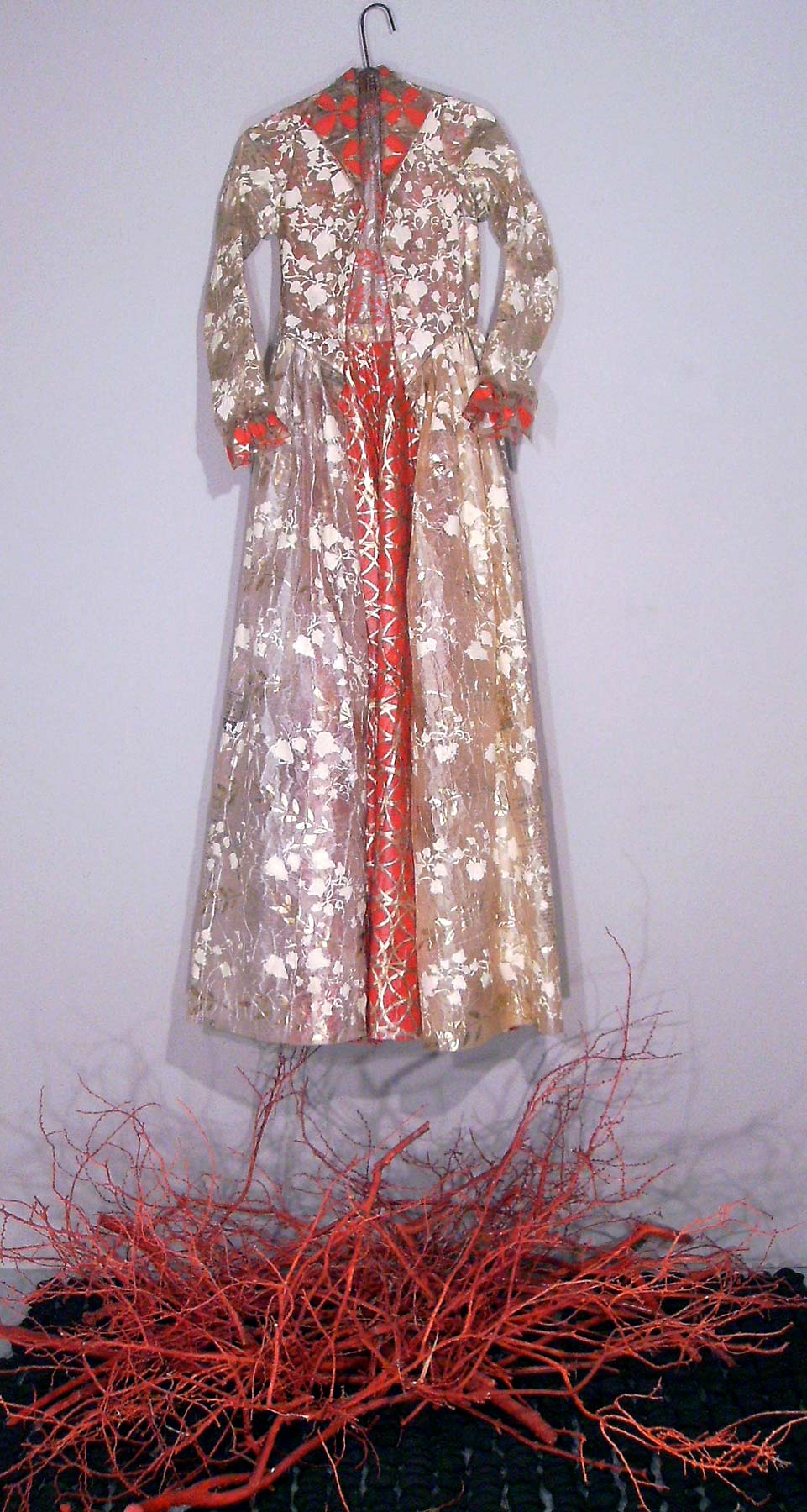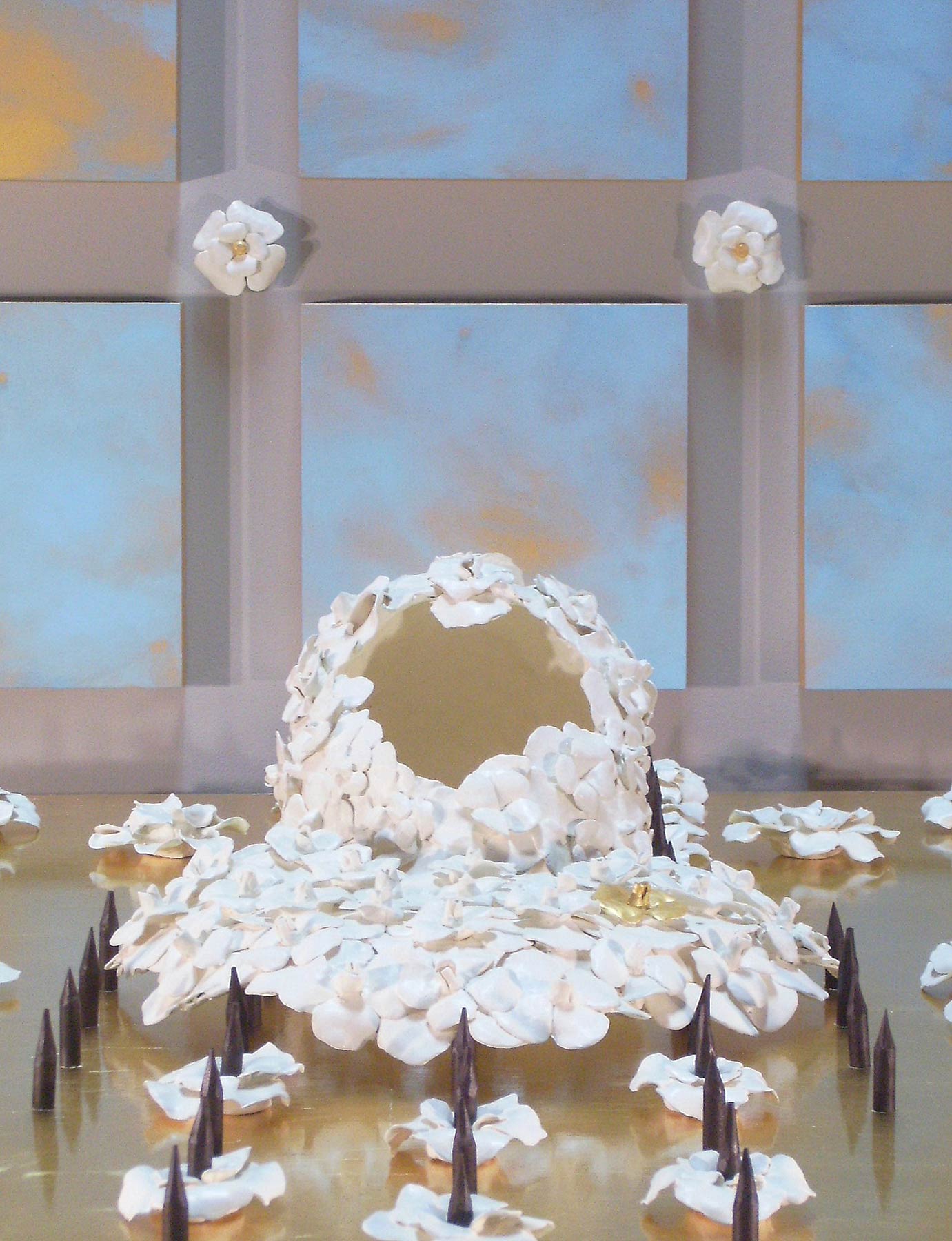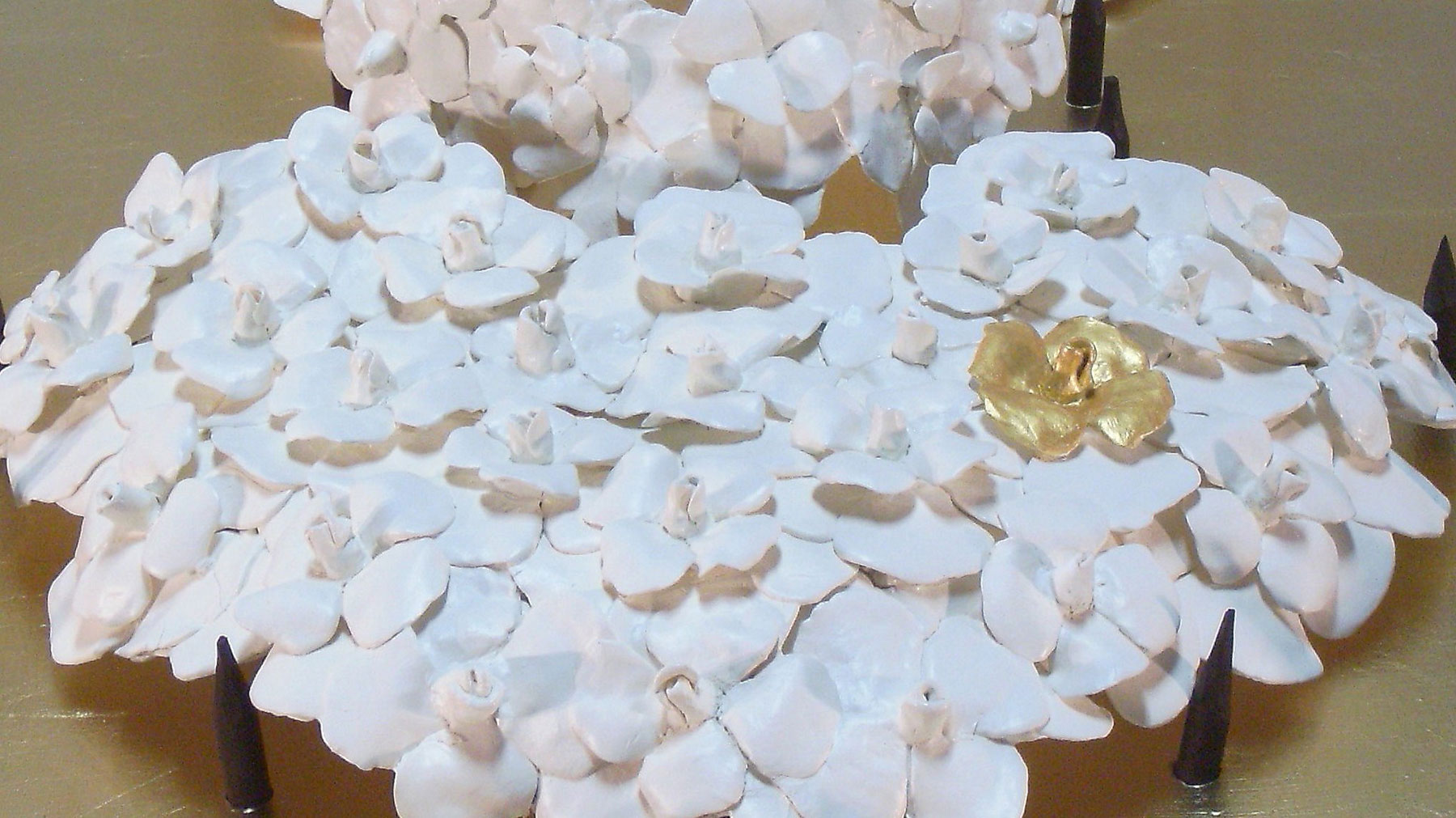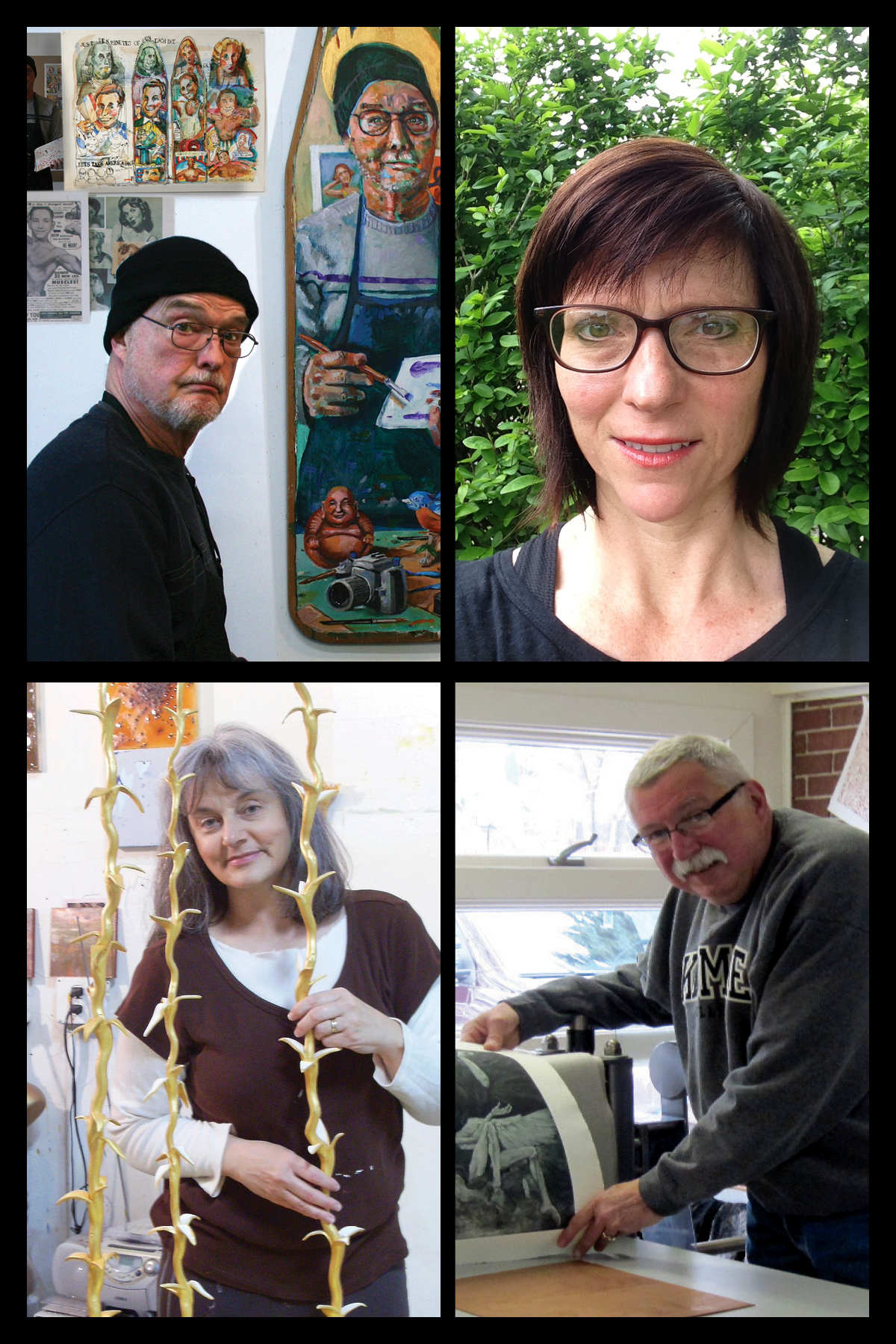
RAM Artist Fellowship Inaugural Exhibition
August 30 – November 30, 2013
Presented by the Osborne and Scekic Family Foundation
This exhibition is a series of solo shows featuring the work of four area artists who were recipients of the inaugural RAM Artist Fellowships. Meant to showcase the diversity and vitality of the Racine/Kenosha visual arts community, the biennial fellowships provide support for the professional development of the community’s artists. Representing a diverse range of styles and media, this exhibition features the work of:
More About the Exhibition
RAM Artist Fellowship Inaugural Exhibition
August 30 – November 30, 2013

Presented by the Osborne and Scekic Family Foundation
This exhibition is a series of solo shows featuring the work of four area artists who were recipients of the inaugural RAM Artist Fellowships. Meant to showcase the diversity and vitality of the Racine/Kenosha visual arts community, the biennial fellowships provide support for the professional development of the community’s artists. Representing a diverse range of styles and media, this exhibition features the work of:
More About the Exhibition
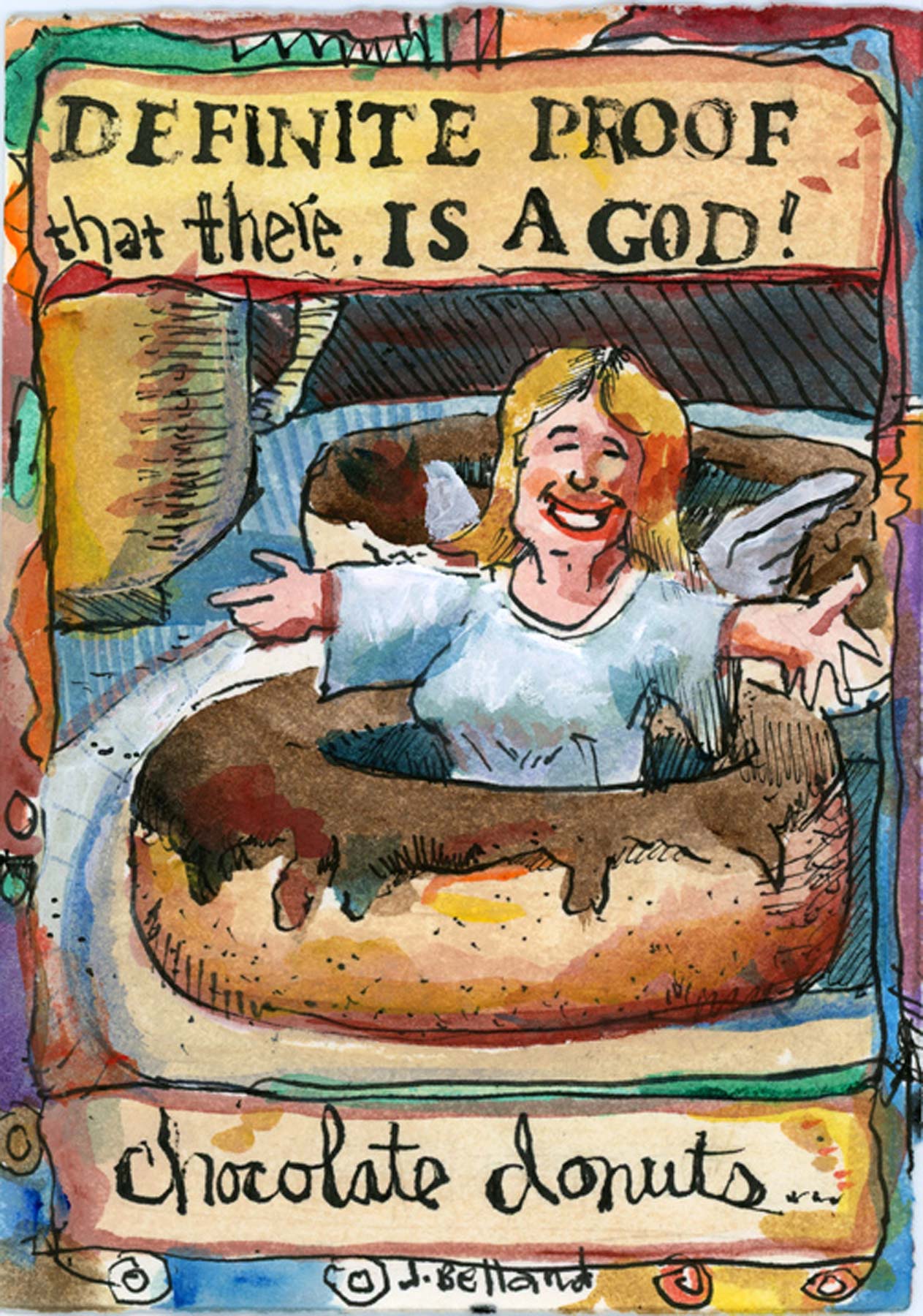
Jerrold Belland
Untitled Cartoon 6 , 2012
Inkjet print on wood
6 x 10 inches
Courtesy of the Artist
Photography: Jerrold Belland
Jerrold Belland
Artist Statement
After years of art school training, exhibiting, and turning every corner I could to discover a new slant on my creative endeavors, I have come back to the place that I started. I make paintings that tell a story. In the postmodern art lexicon this could be viewed as retrograde stuff. However, there you have it. I feel that I’m part of a tradition of storytellers that ranges from Giotto to Max Beckmann. I have a special fondness for the era of Germany between the wars.
The work tends toward the sad, perhaps, or sometimes the mystical: a young girl examines her flaws in a mirror; devils bound about in a room during a family fracas; God swirls helplessly in the air as a young Lethario phones an interested female. The young and the beautiful act out the time-old patterns of narcissism, hubris, and self destruction while the old person’s wisdom goes unheeded.
I have been told that there is a comic element in my work. If there is, then fine. Maybe it is my inner mind throwing water on the super-heated subject matter I often use. Beyond the absurdity, the Joker is at work.
Jerrold Belland

Jerrold Belland
Untitled Cartoon 6 , 2012
Inkjet print on wood
6 x 10 inches
Courtesy of the Artist
Photography: Jerrold Belland
Artist Statement
After years of art school training, exhibiting, and turning every corner I could to discover a new slant on my creative endeavors, I have come back to the place that I started. I make paintings that tell a story. In the postmodern art lexicon this could be viewed as retrograde stuff. However, there you have it. I feel that I’m part of a tradition of storytellers that ranges from Giotto to Max Beckmann. I have a special fondness for the era of Germany between the wars.
The work tends toward the sad, perhaps, or sometimes the mystical: a young girl examines her flaws in a mirror; devils bound about in a room during a family fracas; God swirls helplessly in the air as a young Lethario phones an interested female. The young and the beautiful act out the time-old patterns of narcissism, hubris, and self destruction while the old person’s wisdom goes unheeded.
I have been told that there is a comic element in my work. If there is, then fine. Maybe it is my inner mind throwing water on the super-heated subject matter I often use. Beyond the absurdity, the Joker is at work.
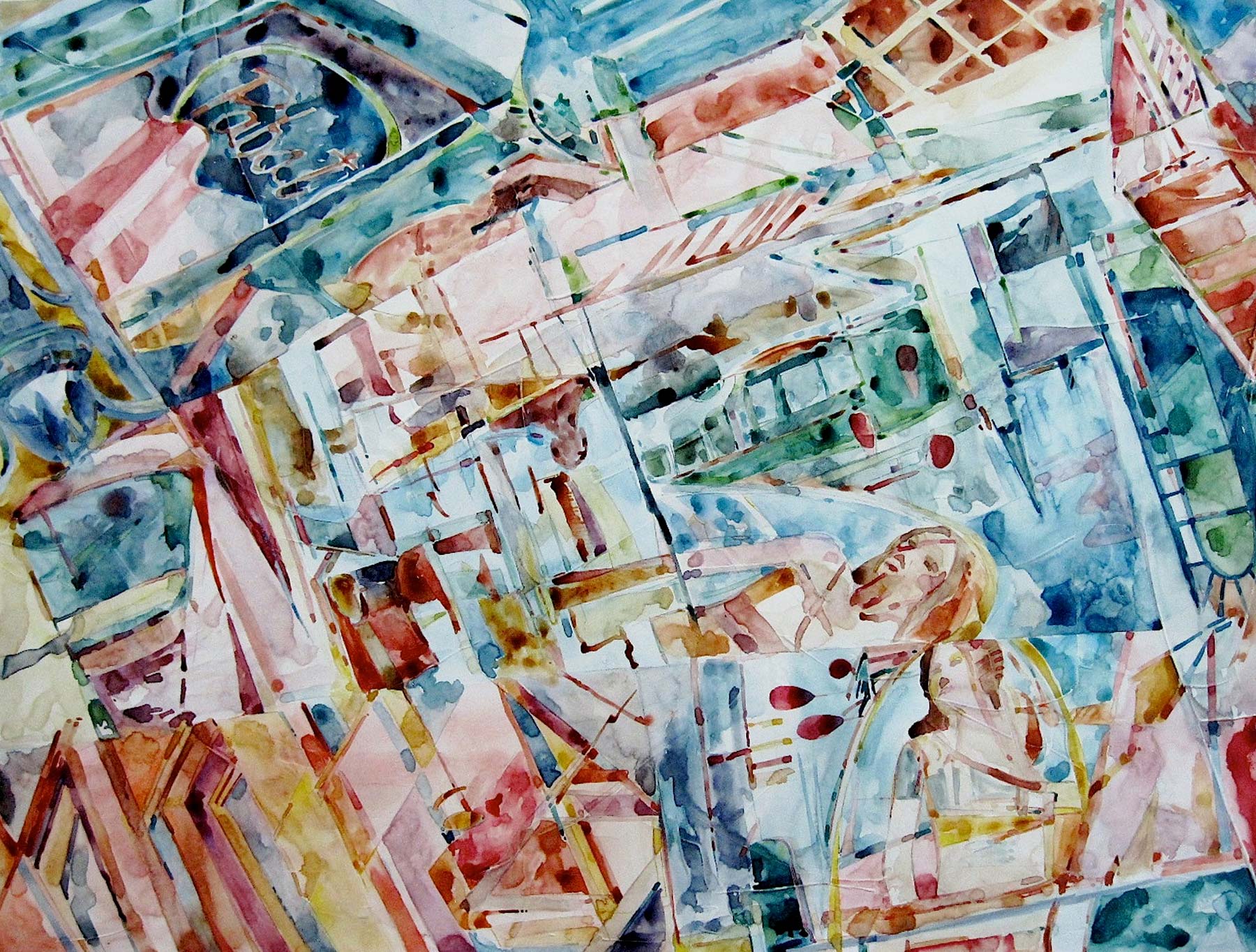
Doug DeVinny
City Serendipity II, 2013
Mixed media
26 x 20 inches
Courtesy of the Artist
Photography: Doug DeVinny
Doug DeVinny
Artist Statement
When I began working on pieces for the fellowship, my intention was to create a body of urban images that evolved from the casual observation of familiar architectural nuances. Ideally, these images—which I would fragment and stylize—would create a visual context that would be simultaneously familiar and foreign. Technically, my goal was to create pictures in both digital and traditional mediums, hoping to allow them to complement each other. The resultant work satisfies many of my objectives and is visually very much about Racine—and a bit of Milwaukee—from a perspective not singly perceived.
Doug DeVinny

Doug DeVinny
City Serendipity II, 2013
Mixed media
26 x 20 inches
Courtesy of the Artist
Photography: Doug DeVinny
Artist Statement
When I began working on pieces for the fellowship, my intention was to create a body of urban images that evolved from the casual observation of familiar architectural nuances. Ideally, these images—which I would fragment and stylize—would create a visual context that would be simultaneously familiar and foreign. Technically, my goal was to create pictures in both digital and traditional mediums, hoping to allow them to complement each other. The resultant work satisfies many of my objectives and is visually very much about Racine—and a bit of Milwaukee—from a perspective not singly perceived.
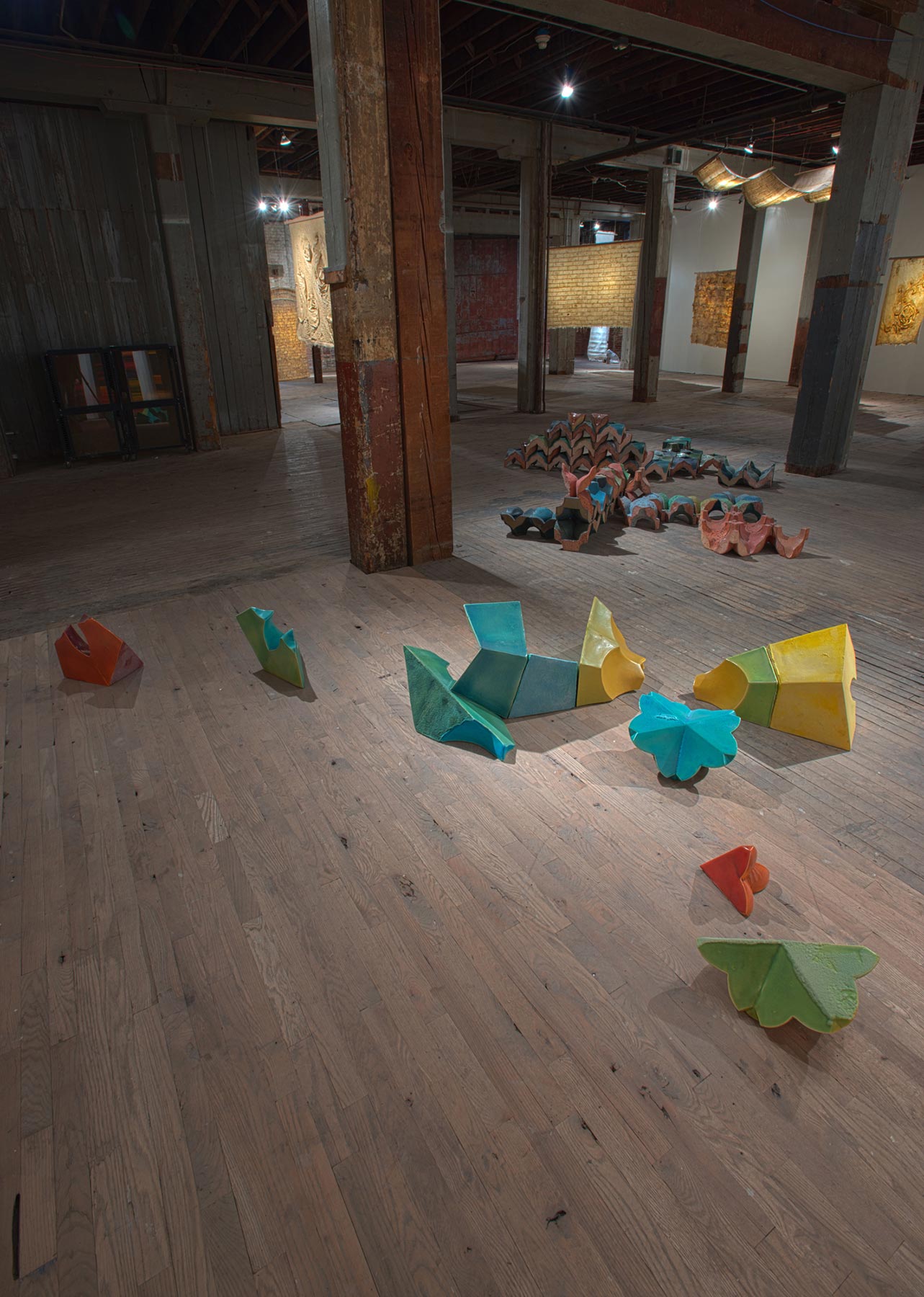
Kimberly Greene
Model for a New Landscape: Equilateral Brick Series 1 (detail), 2013
Glazed porcelain
Various dimensions
Courtesy of the Artist
Photography: Rik Sferra
Kimberly Greene
Artist Statement
My work is a model for a building project. It is a re-visioning of space and architecture. In this work, I create the beginnings of a new landscape. The bricks, based on an equilateral triangle, evoke a built environment of faceted spherical spaces rather than ordinary rectangular cubes. The imagined landscape is disorienting, the spherical spaces conflict with the rectangular spaces of daily life. Spaces are re-built and re-humanized. These are difficult spaces, not flat, convenient or practical. As the viewer experiences the space, the industrial history of brick making is reflected in the multitude of building blocks, each a result of laborious, obsessive, repetitive making. Questions of handmade verses industrial reproduction are brought into the fore. The nature of the loose, interchangeable and interlocking elements invites the viewer to mentally rearrange and rebuild the space creating an ever changing and evolving landscape.
Kimberly Greene

Kimberly Greene
Model for a New Landscape: Equilateral Brick Series 1 (detail), 2013
Glazed porcelain
Various dimensions
Courtesy of the Artist
Photography: Rik Sferra
Artist Statement
My work is a model for a building project. It is a re-visioning of space and architecture. In this work, I create the beginnings of a new landscape. The bricks, based on an equilateral triangle, evoke a built environment of faceted spherical spaces rather than ordinary rectangular cubes. The imagined landscape is disorienting, the spherical spaces conflict with the rectangular spaces of daily life. Spaces are re-built and re-humanized. These are difficult spaces, not flat, convenient or practical. As the viewer experiences the space, the industrial history of brick making is reflected in the multitude of building blocks, each a result of laborious, obsessive, repetitive making. Questions of handmade verses industrial reproduction are brought into the fore. The nature of the loose, interchangeable and interlocking elements invites the viewer to mentally rearrange and rebuild the space creating an ever changing and evolving landscape.
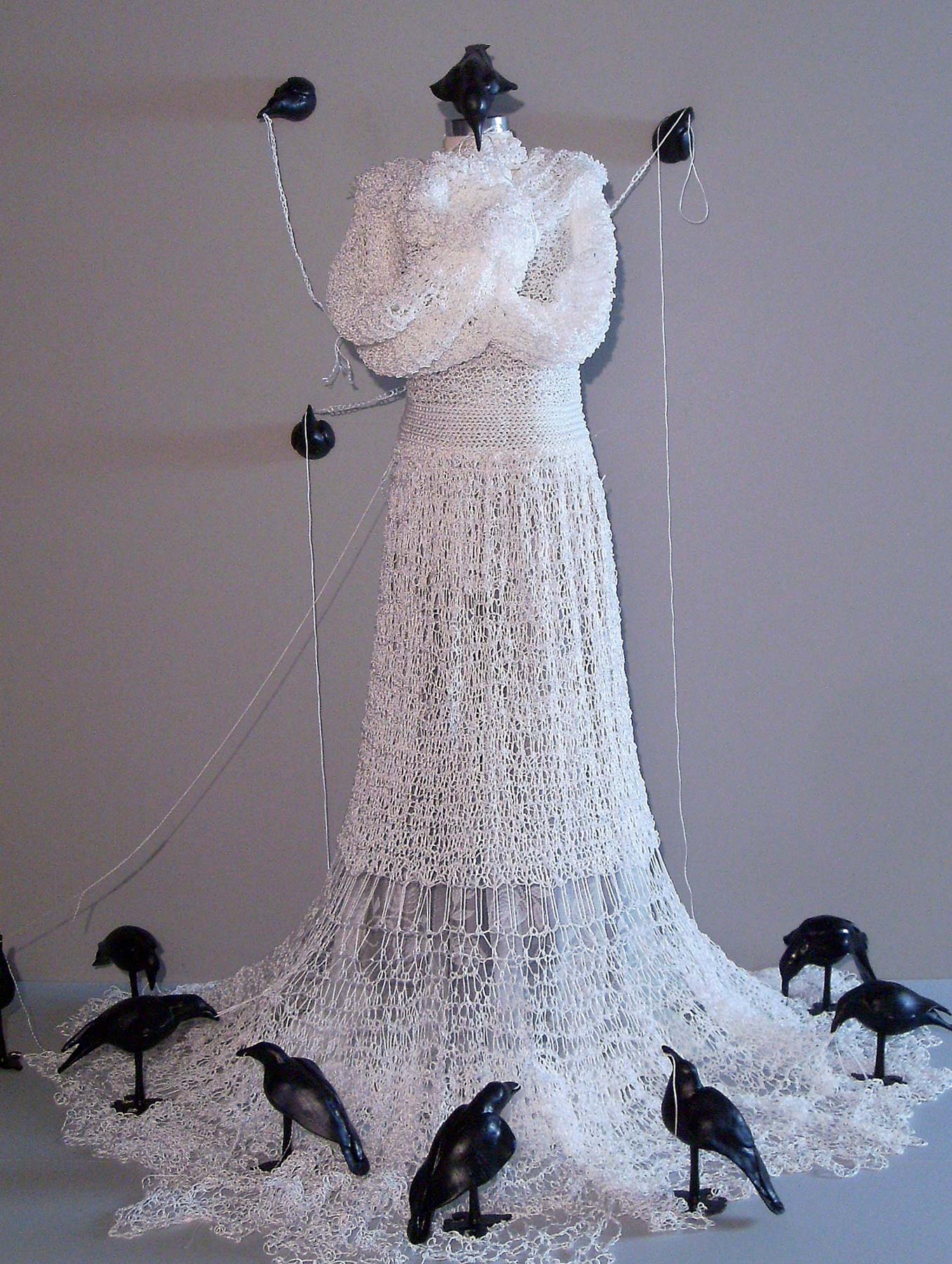
Kathleen Laybourn
A Murder of Crows, 20112–13
Mason line, metal, modeling clay, and acrylic
Courtesy of the Artist
Photography: Kathleen Laybourn
Kathleen Laybourn
Artist Statement
More Than an Icon
Culture creates its definition of who is to be considered “iconic” by assigning value that is based on physical attributes, talent, social status, or desirability. As definitive representations of the time in which they lived, iconic persons become larger than life and oftentimes lose their humanness in the process. Their emblematic status prompts us to forget their victories, struggles, and pain.
Various subcultures have a way of manipulating the meaning of these lives to advance a particular point of view. For example, religious traditions will focus on attributes that vastly vary from the media, whose pursuit of “news” may willfully misrepresent an individual in order to influence the public’s perception. And, trends are created by “experts” to guide behavior and influence almost every aspect of our lives.
This body of work is an invitation for the viewer to ponder more than the immediate and fixed conceptions about the four
women represented in this exhibition. It is an effort to reconnect with the vulnerable and fragile nature of flesh and blood in light of the brave, tragic, or triumphant lives lived.
Kathleen Laybourn

Kathleen Laybourn
A Murder of Crows, 20112–13
Mason line, metal, modeling clay, and acrylic
Courtesy of the Artist
Photography: Kathleen Laybourn
Artist Statement
More Than an Icon
Culture creates its definition of who is to be considered “iconic” by assigning value that is based on physical attributes, talent, social status, or desirability. As definitive representations of the time in which they lived, iconic persons become larger than life and oftentimes lose their humanness in the process. Their emblematic status prompts us to forget their victories, struggles, and pain.
Various subcultures have a way of manipulating the meaning of these lives to advance a particular point of view. For example, religious traditions will focus on attributes that vastly vary from the media, whose pursuit of “news” may willfully misrepresent an individual in order to influence the public’s perception. And, trends are created by “experts” to guide behavior and influence almost every aspect of our lives.
This body of work is an invitation for the viewer to ponder more than the immediate and fixed conceptions about the four
women represented in this exhibition. It is an effort to reconnect with the vulnerable and fragile nature of flesh and blood in light of the brave, tragic, or triumphant lives lived.
Gallery of Work
Exhibitions at RAM are made possible by:
Platinum Partners
The Estate of Karen Johnson Boyd
David Charak
Judith and David Flegel Fund
Ron and Judith Isaacs


Windgate Foundation
Diamond Partners
Ruffo Family Foundation
Ruth Foundation for the Arts
Diane Zebell
Gold Partners
Anonymous
A.C. Buhler Family
Robert E. Kohler Jr. Fund
Osborne and Scekic Family Foundation
Reliance Controls
Trio Foundation of St. Louis
W.T. Walker Group, Inc.
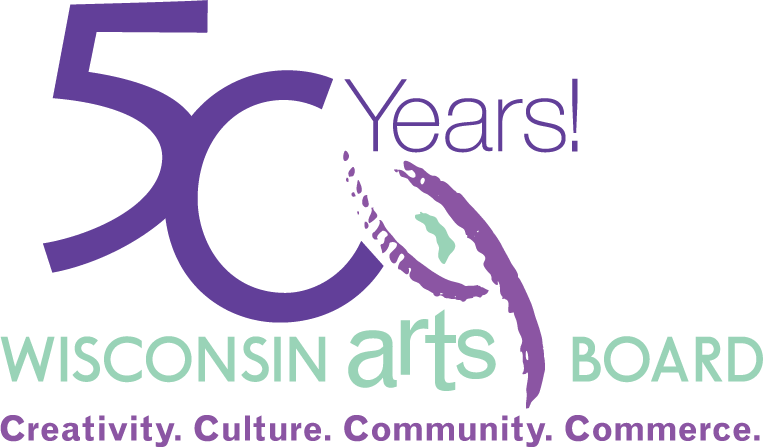
Silver Partners
Anonymous
Baird
Lucy G. Feller
Ben and Dawn Flegel
Sharon and Tom Harty
Dave and Judy Hecker
Paula Kalke
Horizon Retail Construction, Inc.
Johnson Financial Group
Lang Family Foundation
Dorothy MacVicar
Jan Serr & John Shannon
Sandra Shove
Willard and Mary Walker
Bronze Partners
Sandy and Gus Antonneau
Carol Baylon
Rose and Peter Christensen
Dave’s Wine Garage
Educators Credit Union
Patricia and Richard Ehlert
Express Employment Professionals
Deborah Ganaway
Carol Griseto
Hitter’s Baseball
Bill and Debbie Keland
Nancy and Nick Kurten
Susan Manalli
Norbell Foundation
JoAnna Poehlmann
Rasmussen Diamonds
SC Johnson
Harold and Lois Solberg
Kathy Stranghellini
Tito’s
Twin Disc
Janna Waldeck
Barbara Waldman
Marc J. Wollman
Stay in Touch
The Racine Art Museum and RAM’s Wustum Museum work together to serve as a community resource, with spaces for discovery, creation, and connection. Keep up to date on everything happening at both museum campuses—and beyond—by subscribing to our email newsletter:



